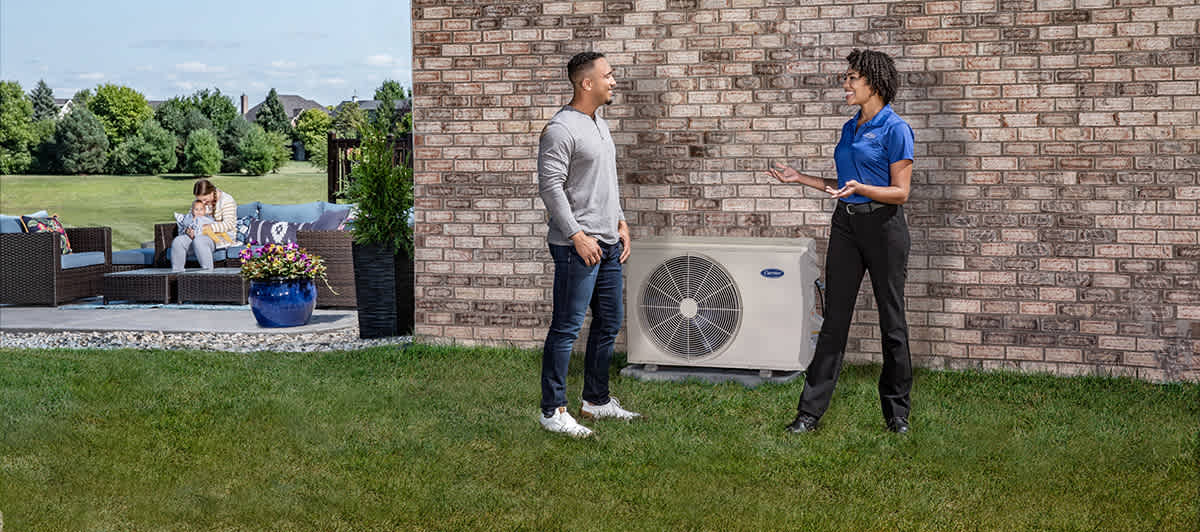Advantages and Disadvantages of Mini Split Systems
By Ryan Mayes
Having a reliable system to heat and cool your home is a must. And while ducted heating and cooling systems are the most common in the U.S., ductless mini splits are becoming more and more popular. In many ways, ductless mini split systems are like “traditional” forced air systems that use ductwork. Both types of systems include an outdoor unit and at least one indoor unit. Both are designed to move heat energy into or out of your living space to provide heating or cooling. And both systems rely on a chemical refrigerant as a key to their performance. However, there are pros and cons of mini split systems. Understanding mini split pros and cons will help the decision-making process for anybody shopping for a new comfort system.

Advantages and Disadvantages of Mini Split Systems
Exploring the advantages and disadvantages of mini split systems can be a mixed bag. If you understand how ductless systems work , the advantages may seem obvious. However, there might be different perceptions about what is a “pro” and what is a “con.” For example, most people would agree that the higher energy efficiency of mini splits is an advantage. On the other hand, ductless mini split systems require an indoor unit in every space that needs heating or cooling. This can be considered an advantage for flexibility of use and zoning capabilities, or a negative if you don’t love the look of an indoor unit in every room.

What is the Major Advantage of Mini-Split Air-Conditioning Systems?
Actually, there are several advantages to consider:
- Ease of installation: Installing a mini split system is typically easier because there is no ductwork to install. Just a small, approximately 3-inch hole is needed to connect piping between the outdoor and indoor unit (or units). By comparison, installing ductwork for a ducted system requires more time and materials, and in some cases, requires cutting into (and then repairing) walls, ceilings or floors.
- Energy efficiency: Mini split systems can deliver comfort at higher efficiencies – up to 28.5 SEER2 cooling and up to 18 HSPF2 heating. Because warm or cool air from a mini split air handler enters the room directly, these systems don’t experience the lost energy consumption that is common with ducted systems.
- Long-term savings: Higher efficiency operation means potential savings on your energy bills for the life of the system.
- Zoning/Control: Because each room that needs heating and cooling has its own air handler, a ductless mini split system is, by definition, a zoned system. You can heat and cool each space individually – so areas that are populated can be more comfortable while other areas can be set back for energy savings (or turned off completely!).
- Low noise: By eliminating ductwork, mini split systems also eliminate a source of noise. Air flowing through ductwork can create a “whoosh” sound, and vibrating ductwork can be noisy as well. In addition, many of today’s ductless air handlers have variable speed fans that operate quietly on low speeds.
- Suitable for room additions/conversions: Converting a garage, basement or attic into an extra living space? Ductless systems make adding comfort easy without the need for ductwork or upsizing your current system to account for the additional load.
Disadvantages of Mini Split Systems
When compared to traditional HVAC systems, there are some potential disadvantages of mini split systems to consider:
- Not always suitable for larger areas: With ductless heating and air conditioning systems, larger rooms may require more than one indoor unit to provide adequate comfort throughout the space. Ducted systems can more unobtrusively provide comfort in larger spaces because floor or ceiling vents are much less noticeable.
- Less effective ventilation: Ducted systems can bring in fresh air from outside and provide whole-home air circulation. Mini split systems heat or cool the indoor air in each individual room without bringing fresh air into the mix.
- Appearance/space: Ductless mini split systems require an indoor unit in every room they are heating and cooling. A typical indoor unit is wall mounted and easily visible in the room, which can disrupt the aesthetics of the space. Learn more about wall mounted air conditioners .
Mini Split Pros and Cons Snapshot
Here is a summary of the pros and cons of ductless mini split air conditioners and heat pumps:
| Advantages | Disadvantages |
| Easy to install | Not as effective in larger areas |
| Higher energy efficiency | Less effective ventilation |
| Long-term savings | Appearance/space |
| Zoned system for comfort control |
|
| Quiet |
|
| Great for room additions/conversions |
|
While the mini split vs central air conversation has a lot of give and take, the best HVAC system for your home is the one that effectively and efficiently heats and cools your living areas to your satisfaction.


